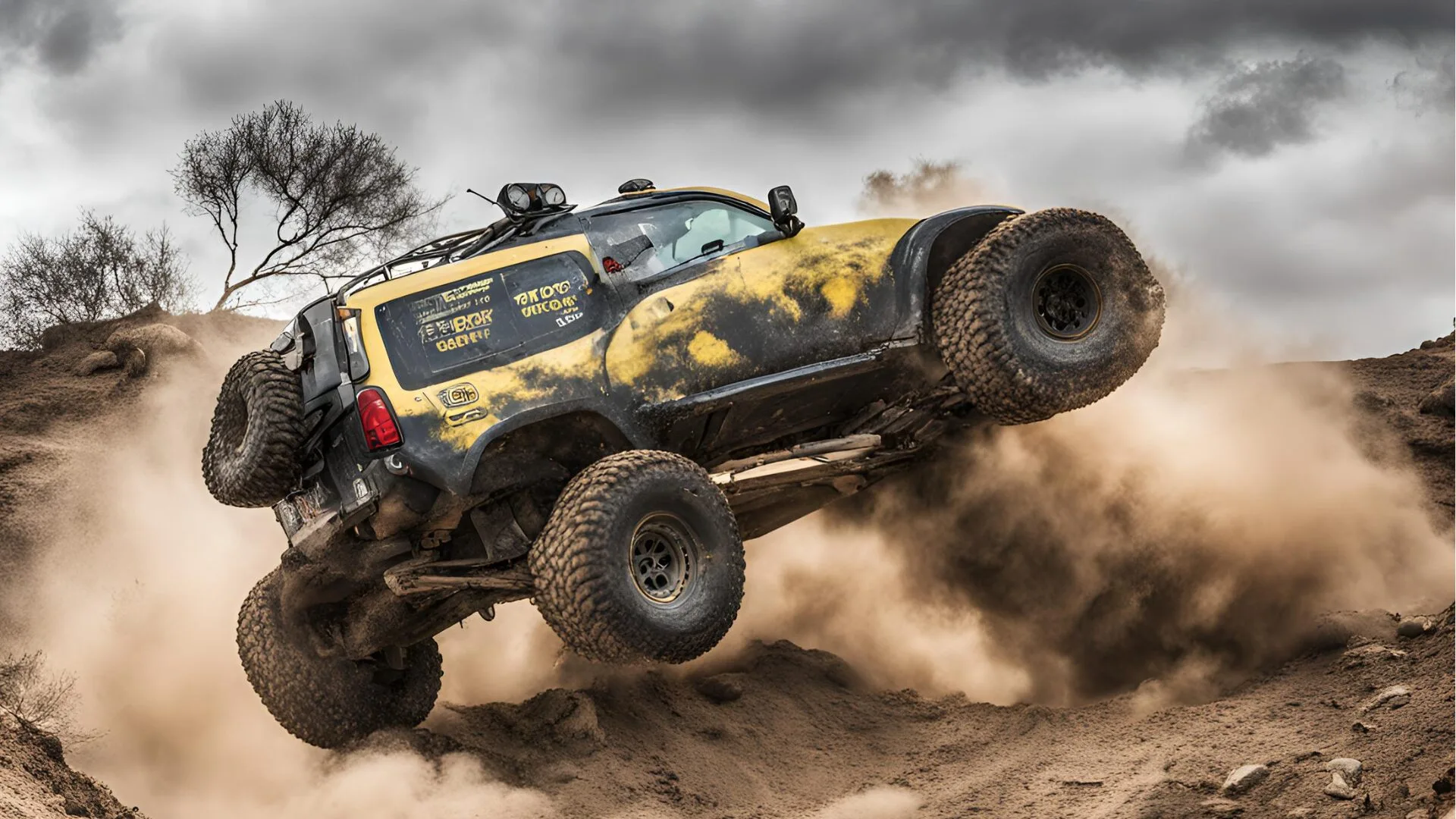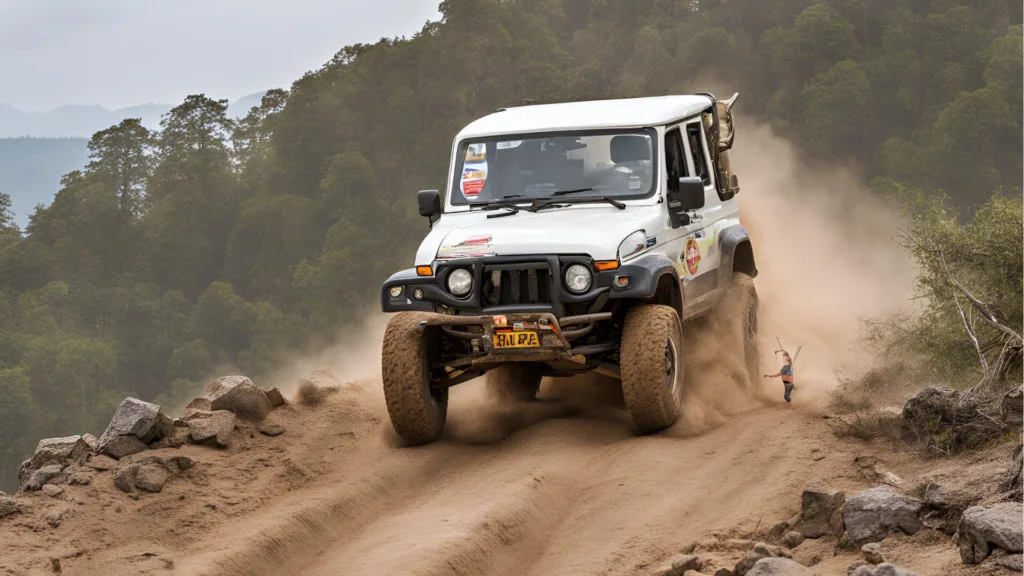Extreme off-road safety is essential for navigating hazardous terrains without accidents. Equip your vehicle with appropriate safety gear and educate yourself on off-road driving techniques.
Venturing into the wild in your 4×4 can be an adrenaline-fueled adventure, offering a unique blend of excitement and challenge. Off-road enthusiasts know the importance of preparation and respect for the unpredictability of nature. This means not only having a vehicle capable of handling rough terrain but also understanding the skills required to manage potential risks.
Safety is paramount, and this calls for investing in reliable equipment, such as all-terrain tires, a winch, and underbody protection. It also involves gaining knowledge about the terrain, weather conditions, and emergency protocols. Being proactive in your approach to off-road safety ensures thrilling but safe experiences for every adventure you embark on.
Navigating The Unpaved Path
Venturing off-road unleashes an adrenaline rush like no other.
Every twist and turn brings a challenge—from muddy tracks to rocky inclines.
Yet, safety reigns supreme on these rugged excursions.
Whether a seasoned pro or a novice to the thrill, preparation separates the reckless from the ready.
Vehicle Preparation Essentials
A reliable vehicle marks the start of any off-road journey.
Thorough checks and upgrades are critical before hitting those demanding terrains.
- Tires: Use off-road tires with deep treads for grip.
- Brakes: Ensure brakes respond effectively.
- Lights: Check all lights for clear signals and visibility.
- Suspension: Upgrade for heavy-duty shocks.
- Fluids: Top off engine oil, coolant, and brake fluid.
Also, pack a toolbox with repair essentials, a first-aid kit, extra fuel, and a spare tire.
Terrain Analysis Before The Adventure
Knowledge of the upcoming terrain spells the difference between thrill and peril.
| Terrain Type | Challenges | Preparations |
|---|---|---|
| Muddy | Slippery surfaces, hidden obstacles | Winch, traction boards |
| Sandy | Vehicle sinking, course change | Low tire pressure, shovel |
| Rocky | Abrasion, sudden jolts | Skid plates, higher ground clearance |
| Forested | Narrow paths, branches | Tree protectors, saw |
Scanning maps and reading reports from other off-roaders provide insights into expected trail conditions.
Remember, responsible off-roading ensures the adventure doesn’t turn into misadventure.
Driver Skills And Knowledge
Conquering off-road terrain needs more than a powerful vehicle.
Driver skills and knowledge are the true backbone of off-road safety.
Whether a beginner or seasoned explorer, mastering certain driving techniques is crucial.
Drivers need to navigate through unpredictable elements with precision and control.
The following headings detail essential techniques for off-road driving.
Basic Off-road Driving Techniques
Every off-road journey starts with a foundation of basic techniques.
Building these skills sets the stage for safe adventures.
- Understanding Your Vehicle: Know the dimensions, clearance, and angles.
- Wheel Positioning: Keep the wheels pointed in the direction of travel to maintain control.
- Throttle Control: Use a steady foot to avoid jarring and wheel spin.
- Spotting: Use a co-driver or spotter to navigate blind spots and difficult terrain.
Advanced Maneuvers For Harsh Conditions
When basic skills are second nature, advanced maneuvers take on harsh conditions.
These techniques help avoid danger and protect the vehicle from damage.
| Maneuver | Description | Usage |
|---|---|---|
| Winching | Using a winch to pull your vehicle out. | When stuck in mud or a ditch. |
| Rock Crawling | Slow, careful navigation over rocks. | For steep, rocky inclines. |
| Water Fording | Crossing water bodies at safe points. | When confronting shallow streams. |
| Sand Driving | Adjusting speed and tire pressure for sand. | On desert dunes and beaches. |
Gear Up: Safety Equipment Must-haves
Adventuring off the beaten path is a thrilling experience. But safety is key to enjoying the wild without risks. Off-roaders need the right gear. Here’s the essential equipment for extreme off-road safety.
Critical Recovery Tools
To tackle tough terrains, your vehicle must be ready for anything. Recovery tools are vital.
- Winch: A powerful winch can pull your vehicle out of deep mud or over large obstacles.
- Traction Mats: Stuck in sand or snow? Traction mats provide the grip your wheels need.
- High-Lift Jack: For serious off-roaders, a high-lift jack can help lift your vehicle during tricky situations.
Protection And First Aid Supplies
Injuries can happen. Being prepared is non-negotiable for off-roaders.
| Item | Purpose |
|---|---|
| Helmet | Essential for protecting your head during bumpy rides. |
| Gloves | Protect your hands when using tools or moving obstacles. |
| First Aid Kit | Pack bandages, antiseptics, and other supplies for cuts and bruises. |
Always check your equipment before you set out. Prepare for the unexpected to stay safe and enjoy your extreme off-road adventure.

Communication And Emergency Protocols
Underestimating the importance of communication and emergency protocols in extreme off-road adventures can turn a thrilling experience into a perilous endeavor. It’s essential to stay connected and have a solid action plan. Find out how to keep safe beyond the pavement.
Staying Connected Off The Grid
During off-road excursions, consistent communication is your lifeline. Given the nature of remote locations, typical cell service often falls short.
- Invest in satellite communicators for areas without cell reception.
- Use two-way radios to stay in touch with your group.
- Download offline maps on your devices before setting out.
Leverage technology to ensure you’re never out of reach, even off the grid.
Action Plan For Emergency Situations
An emergency can occur at any moment. Be prepared with a clear, practiced plan.
- Determine a leader who will make critical decisions during an emergency.
- Carry a comprehensive first aid kit and know how to use it.
- Use GPS tracking devices for quick location identification.
| Action | Equipment | Detail |
|---|---|---|
| Injury Response | First Aid Kit | Managed by a designated team member. |
| Vehicle Breakdown | Repair Tools | Basic mechanical knowledge is crucial. |
| Getting Lost | GPS/Satellite Messenger | Share your route with someone offsite. |
Review and practice your emergency procedures before departure.
Environmental Considerations And Respect
Thrill-seekers love extreme off-road adventures. Yet, the world we explore demands care. This blog post dives into how off-roaders can protect nature. Ready for a responsible ride?
Minimizing Ecological Footprint
Our planet’s health is critical. Off-roading can harm it. But, you can take steps to reduce damage. Let’s ensure our trails stay green and clean for everyone.
- Stick to trails: Prevent new scars on the land.
- Avoid puddles: They might be homes for wildlife.
- No litter: What you bring in, you take out.
- Seasonal awareness: Some periods require extra care.
Legal And Ethical Off-roading
Following rules keeps the fun legal and ethical. Know the laws of the lands you traverse.
| Area | Regulations |
|---|---|
| National Parks | Limited access, permit might be needed |
| Private Lands | Owner’s permission required |
| State Lands | Varies by state, check the rules |
Respect signs and barriers. They guide and protect us. Stay informed and compliant.

Joining The Off-road Community
Ready to dive into the thrilling world of extreme off-roading? Joining a community makes the adventure even better. With the right group, safety and fun join hands. Let’s see how to connect with fellow off-road lovers!
Networking With Fellow Enthusiasts
Finding like-minded off-road fans opens doors to shared experiences. Here’s how to start:
- Attend Local Events: Expos, races, and meet-ups are great for meeting peers.
- Social Media Groups: Join Facebook groups or forums dedicated to off-roading.
- Club Memberships: Become a member of an off-road club to gain insider tips and make new friends.
Remember, connections lead to better adventures.
Training And Workshops For Continuous Learning
To stay safe while off-roading, seek ongoing education:
- Find Local Courses: Look for off-road driving classes.
- Attend Workshops: Workshops on vehicle recovery and first aid are useful.
- Online Resources: Watch tutorials from established off-roaders.
Continuous learning keeps you and your crew safe.

Frequently Asked Questions Of Extreme Off-road Safety
What Should Your Off-road Emergency Kit Include?
An off-road emergency kit should comprise a first aid kit, a durable flashlight, a multi-tool, a tire repair kit, emergency flares or a signaling device, and enough food and water for all passengers. It’s essential to be prepared for any scenario.
How Can I Improve My Vehicle’s Off-road Safety?
To enhance your vehicle’s off-road safety, invest in quality, all-terrain tires, ensure regular maintenance checks, upgrade your suspension system, and add protective accessories like skid plates. Adequate lighting and a communication device are also crucial for safety.
What Are The Top Off-road Driving Techniques?
Top off-road driving techniques include maintaining momentum, using low gears for better vehicle control, understanding your vehicle’s approach and departure angles, navigational awareness, and minimizing wheel spin. Always assess the terrain ahead and proceed with caution.
How Do You Navigate Off-road Terrain Safely?
Safely navigating off-road terrain requires slow speeds, vigilant observation, and the ability to read the terrain. Use a spotter for challenging paths, follow existing trails when possible, and avoid causing damage to the natural environment.
Conclusion
Navigating extreme terrains requires diligence and preparation. Ensuring your safety off-road is paramount; it protects both you and the wild outdoors. Embrace these tips, gear up correctly, and always remain vigilant. Adventure awaits, but let’s tread thoughtfully and return with stories, not scars.
Ready for the challenge? Off-road responsibly.


